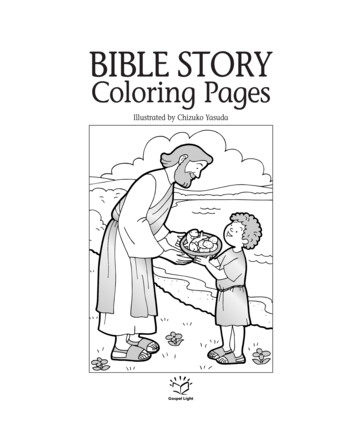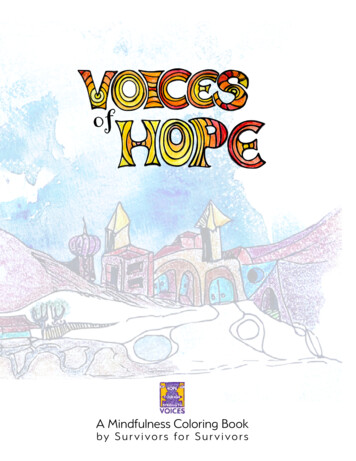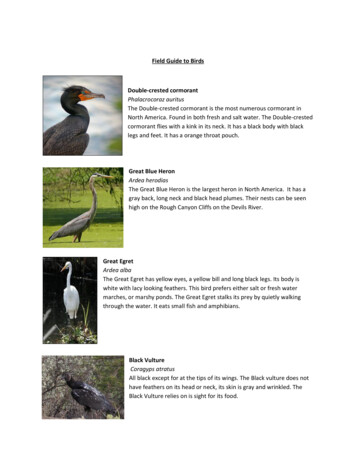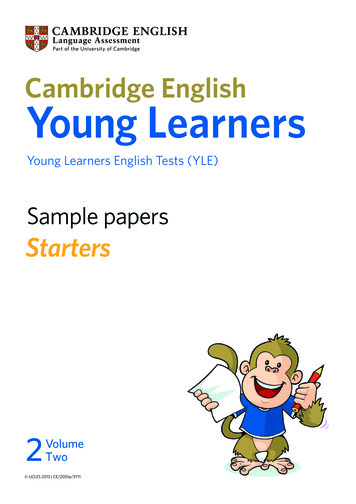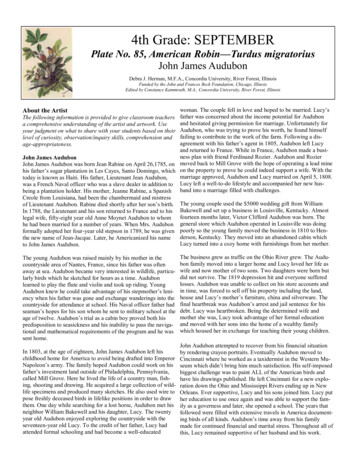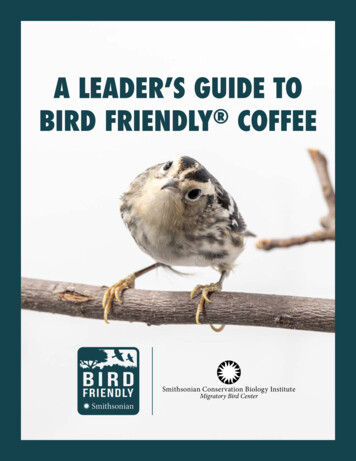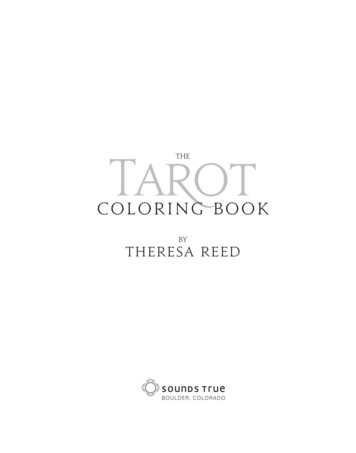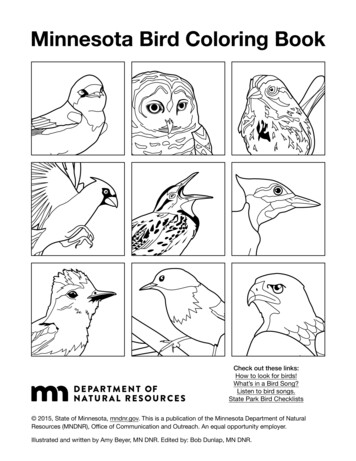
Transcription
Minnesota Bird Coloring BookCheck out these links:How to look for birds!What’s in a Bird Song?Listen to bird songs.State Park Bird Checklists 2015, State of Minnesota, mndnr.gov. This is a publication of the Minnesota Department of NaturalResources (MNDNR), Office of Communication and Outreach. An equal opportunity employer.Illustrated and written by Amy Beyer, MN DNR. Edited by: Bob Dunlap, MN DNR.
Barn SwallowColor guideyellowwhitedark graydark graylight grayrustdark bluedark graylight graytanlight grayIf you see a small, fast, low‑flyingbird with a forked tail it is probablya barn swallow. Barn swallowshunt in open areas and over water,catching insects in flight. Theybuild their nests of mud underedges of structures such as barnsor park shelters.
Barred OwlColor guideyellow golddeep brownwhitebrown streaksgrayyellow goldbrownwhiteThe barred owl lives in large,mature forests, often near water.Its nighttime hoot resembles thephrase “Who cooks for you? Whocooks for you all?” It hunts from aperched position, intently listeningfor a variety of small animalsscurrying below on which it feeds.
Common LoonColor guideyellowred eyewhitedark graydark green-bluewhiteThe common loon is Minnesota’sstate bird. You can hear its tremolocall on clear lakes. Loons summer(breed) here and winter alongthe Atlantic, Pacific, and Gulf ofMexico coasts. Loons dive easilyunder water to catch fish but havedifficulty walking on land.
Common YellowthroatColor he common yellowthroat warbleris often seen low to the groundin heavy vegetation. They feedon insects and nest in shrubs,preferably near marshes. Theywinter in the southern UnitedStates and Mexico. The male’smarkings include a mask similarto a raccoon’s.
Great Crested FlycatcherColor guidebrowngrayburnt orangelemon yellowgrayYou may hear (but probably notsee) great crested flycatchers highin the top branches of hardwoodtrees in summer. This bird likes toswoop down and eat insects inmidair. These flycatchers will nestin nest boxes.
KilldeerColor guidebrown crown,eye and backred ring aroundeye and gray billwhiteorangewing tipsbrown crown,eye and backwhitewhitepeachgrayKilldeer are shorebirds that aremore often seen in lawns, golfcourses, or harvested fields than inwet areas. They hunt on the groundby running and stopping to pluckup worms, grasshoppers, andeven seeds. An adult killdeer willpretend its wing is broken to drawpredators away from its nest.
Northern CardinalColor guidegraydeep brown eyesredredishtanred beaksgoldentanbright redred-graygraydark grayred-graygray wingtipsNorthern cardinals live in Minnesotayear-round. Males are mostly redand females are tan with hints ofred. They have many songs—oneis a two-part whistle followed by atrill, and another sounds like “birdie,birdie, birdie.” Listen for cardinalsearly in the morning in spring.
Pileated WoodpeckerColor guidevivid redpinkdark graywhitevivid reddark graygrayvivid redwhitedark graymask and billwhitedark graydark graywhitewhitePileated woodpeckers are verylarge and unmistakable. Theydrill nesting cavities into standingdead trees, which many otherbirds will continue to use forshelter and nesting in followingyears. Their favorite meal iscarpenter ants.
Red-tailed HawkColor guidetandark graybrownwhitedark graytandark grayorange redwhitefeather tipsRed-tailed hawks are among thelargest hawks in Minnesota. Theyhave a white chest, dark belly band,and orange red tail but color variesin each individual. They like to soarin large circles when hunting andcan hover when facing into thewind. They perch near open landsand eat small mammals.
Song SparrowColor guidereddish brownreddish browngraypale graydark graygraybrown eyes,tail and streakswhiteThe song sparrow is abundantthroughout the United States.Identify them by their dark breaststreaking with a large centralspot, as well as their habit ofpumping their long tails up anddown in flight. These sparrowswill visit backyard bird feeders.
Western MeadowlarkColor guidegray beakyellow-goldpinkdeep brownyellow-goldtanwhitetanThe western meadowlark’sremarkable song sounds likebubbly high notes from a whistle.They prefer prairie and farmlandhabitat, and eat insects andseeds on the ground.
Minnesota Bird Coloring Book Author: Amy Beyer Subject: Directions how to color 11 popula
